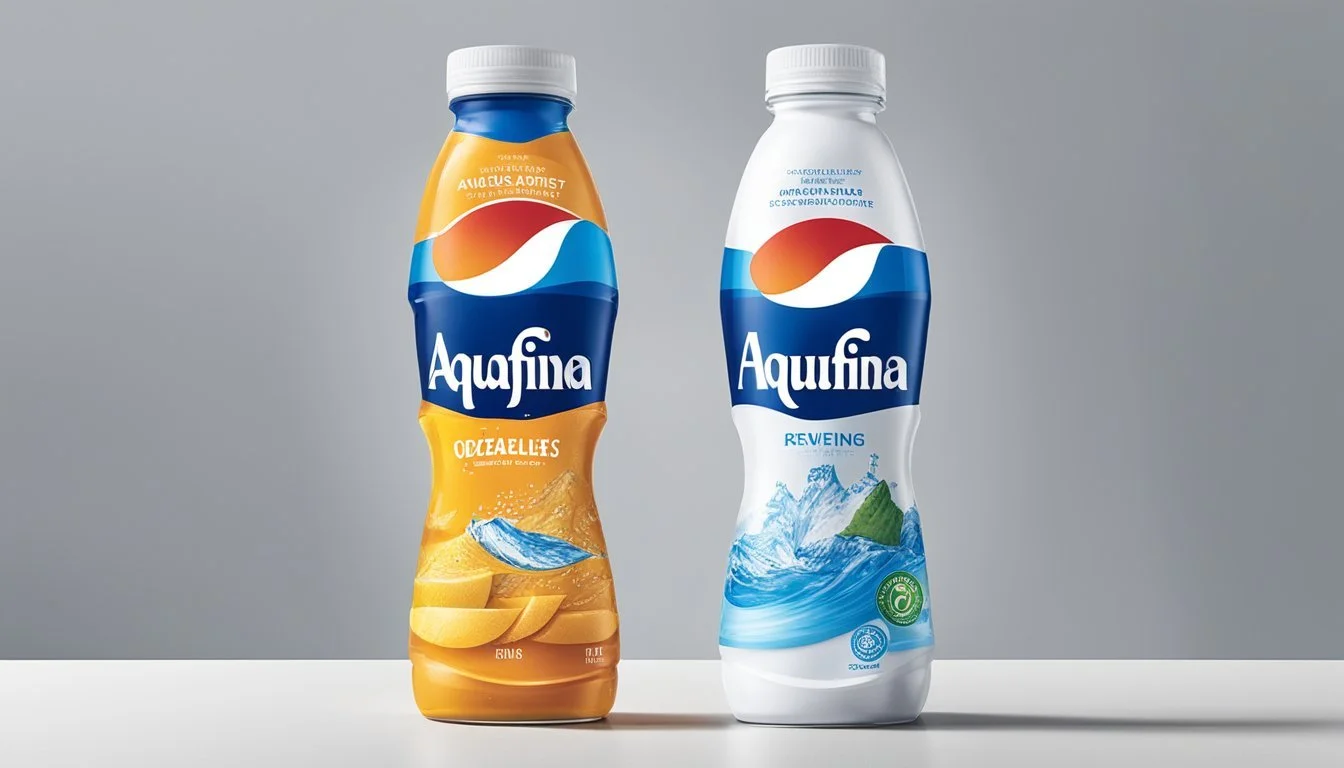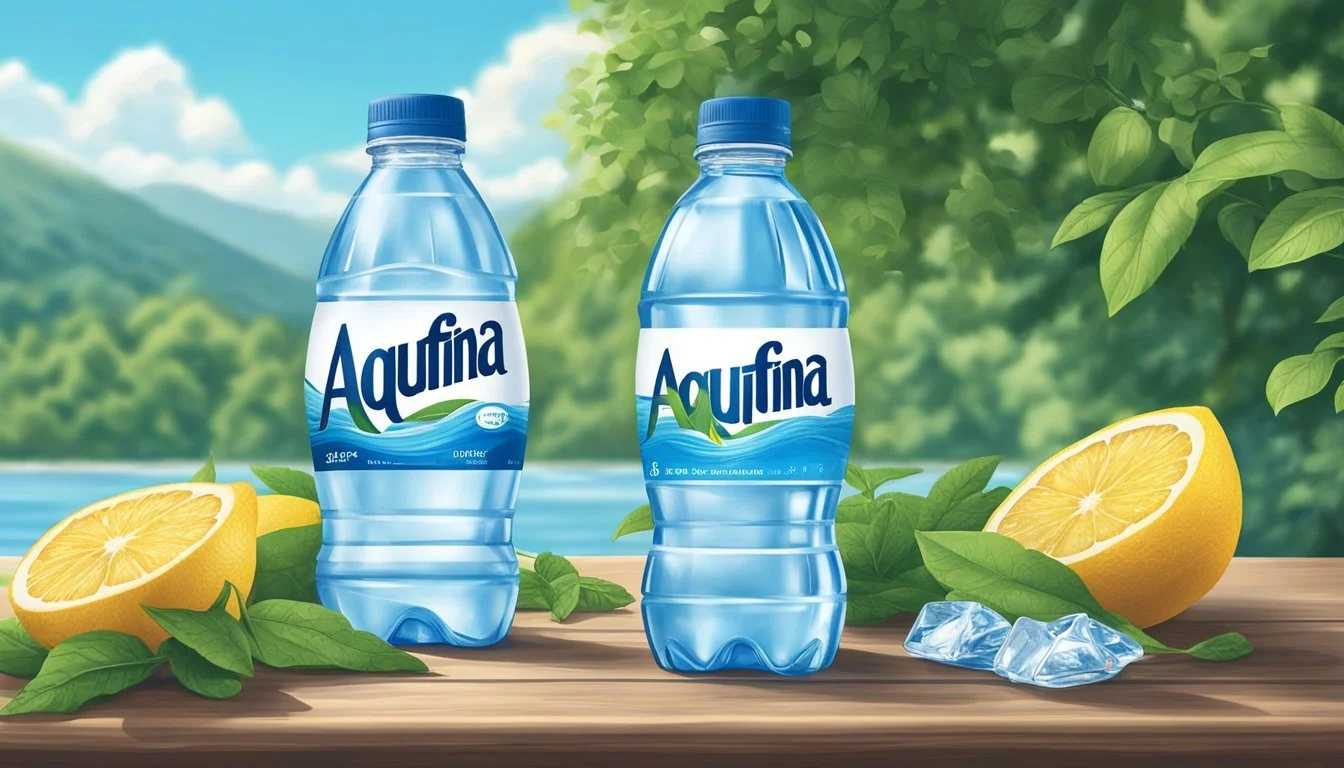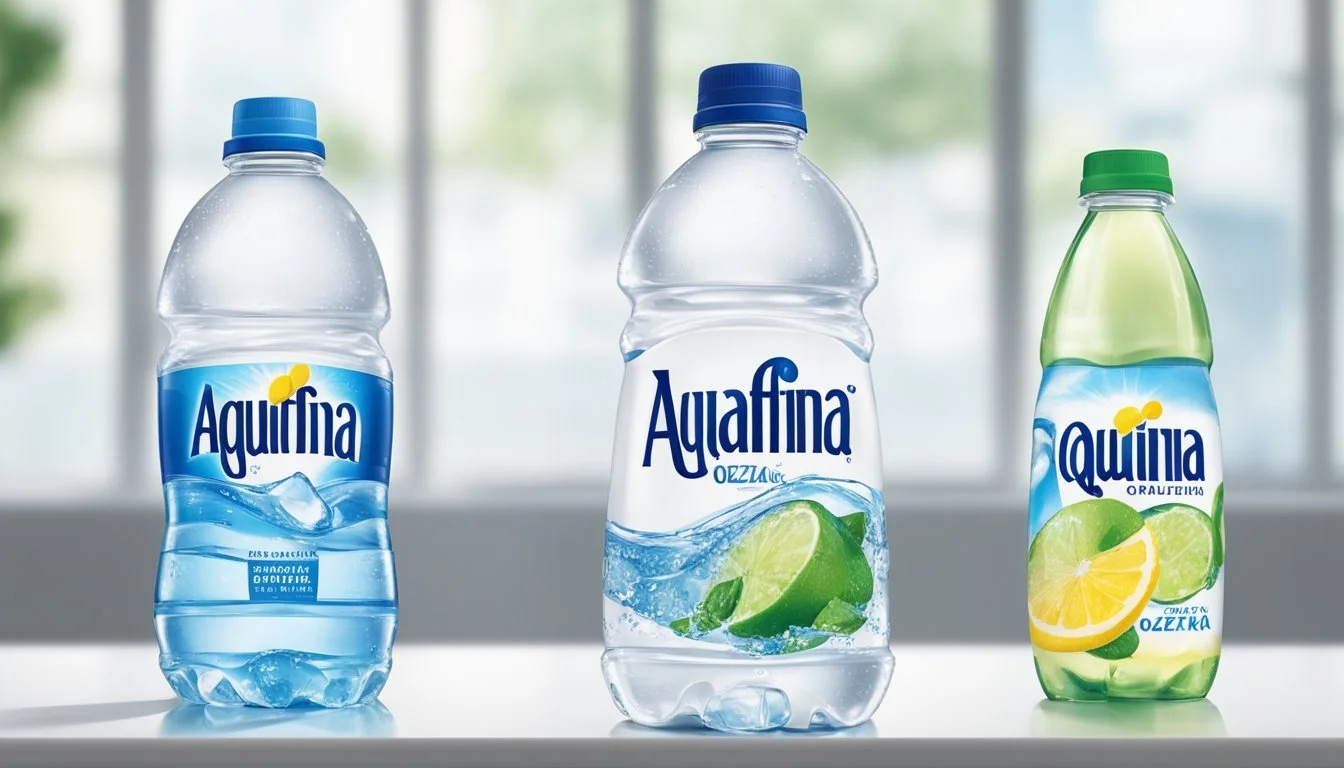Aquafina vs. Ozarka
A Comprehensive Comparison of Bottled Water Brands
In the world of bottled water, consumer choices often come down to personal preference and perception of purity, taste, and overall quality. Aquafina and Ozarka represent two brands with distinct sources and treatment processes. Aquafina, produced by PepsiCo, is purified drinking water that is sourced from municipal water supplies and undergoes a rigorous treatment process, which includes reverse osmosis. This process strips away minerals and impurities, giving Aquafina its characteristic clean and crisp taste that its drinkers value.
Comparatively, Ozarka, under the ownership of Nestlé Waters, is a brand of spring water that comes from natural springs in Texas. The brand prides itself on the water's natural origins and its regional heritage. Ozarka touts a refreshing taste that embodies the natural minerals of its spring source, which resonates with consumers who prefer water with a more natural mineral profile. The question of which bottled water is better isn't just a matter of taste preference but also encompasses factors such as sustainability, water source, health implications, and brand trust—all key elements that inform a consumer's decision in the bottled water aisle.
Overview of Bottled Water Brands
In the crowded market of bottled water, brands differentiate themselves through purity, taste, and source of their water.
Variety of Brands
Bottled water is available from a multitude of brands, offering a range of products from sparkling to still, and flavored to natural. Major corporations like Nestlé, Coca-Cola, and PepsiCo have significant market shares. Consumers can find bottled waters under various labels, each touting unique selling points such as mineral content, filtration methods, and source transparency. The spectrum of bottled water brands provides a diverse selection to cater to differing preferences and needs.
Notable Brands and Their Sources
Nestlé features prominently in the bottled water market with its brand Nestlé Pure Life, widely recognized for its global presence. Despite its average ranking in taste tests, it maintains a strong consumer base due to extensive distribution.
Coca-Cola owns several water brands, including Dasani, a purified water enhanced with minerals, and Smartwater, a vapor-distilled product with added electrolytes for taste. Dasani is often under scrutiny due to its use of tap water as a source, which is then filtered and enhanced.
PepsiCo’s Aquafina is similarly purified using a seven-step process, ensuring a clean and crisp taste. This brand competes closely with Coca-Cola’s offerings.
Natural spring waters, such as Poland Spring and Arrowhead, source their product from specific springs, often contributing to a particular mineral content and taste profile. Ozarka, under the BluTriton label, boasts a domestic spring source, emphasizing freshness.
Luxury brands like Fiji, Evian, and Voss offer water from exotic and pristine locations, marketing their products with a premium image. Fiji water, for instance, is sourced from an aquifer in Fiji, while Evian is sourced from the French Alps.
Smaller brands such as Icelandic Glacial and Acqua Panna also find their niche with their unique sources, from Icelandic springs and the hills of Tuscany, respectively. Mountain Valley Spring Water and Eternal Water highlight their natural US springs, appealing to consumers seeking domestically sourced water.
Health and Hydration
When evaluating bottled water brands like Aquafina and Ozarka, the aspects crucial for health and hydration are their content of electrolytes and minerals, as well as the pH level of the water. These factors play significant roles in how water is absorbed and utilized in the body.
Hydration and Its Importance
Hydration is essential for maintaining bodily functions, with water acting as a transportation medium for nutrients, a temperature regulator, and a detoxifying agent. Both Aquafina and Ozarka offer the hydration necessary for these bodily processes, but their source and purification methods may influence the end product. Aquafina is known for its thorough purification process, which includes reverse osmosis, resulting in a clean and pure water—although devoid of additional minerals. Ozarka, sourced from natural springs in Texas, might retain naturally occurring minerals that could contribute to better hydration.
Aquafina: Utilizes reverse osmosis, providing pure water.
Ozarka: Spring water that may contain natural minerals aiding in hydration.
Electrolytes and Minerals in Water
Electrolytes and minerals are crucial in water as they help regulate nerve and muscle function, balance blood acidity and pressure, and rebuild damaged tissue. While purified bottled water like Aquafina might not contain significant amounts of these electrolytes naturally, Ozarka's spring water potentially includes them to some extent.
Electrolytes commonly found in water:
Potassium: Important for cell function.
Magnesium: Needed for many biochemical reactions in the body.
Calcium: Vital for bone health.
Minerals:
Magnesium sulfate: Sometimes added for taste or replenishing minerals post the purification process.
Potassium chloride: Similarly added to some waters.
Considering the pH level of water is another important aspect. While Aquafina has been reported to have a more acidic pH level, Ozarka often boasts a more alkaline or neutral pH due to its spring source. Alkaline water has been suggested to have health benefits, although evidence is limited:
Aquafina: Slightly acidic pH level.
Ozarka: Typically neutral or slightly alkaline pH level.
The presence of these components in bottled water influences not just the taste but may also affect the body's hydration efficiency and overall health benefits.
Water Quality and Purity
In evaluating the quality and purity of bottled water, critical aspects include the methods of filtration and purification each brand undertakes and the degree to which each meets safety standards by minimizing contaminants.
Filtration and Purification Processes
Aquafina's purification system involves multiple steps. Initially, the water undergoes carbon filtration to remove organic compounds, giving it a basic level of purification. It is then further processed using reverse osmosis, which removes dissolved salts and other impurities at a molecular level. Lastly, water passes through ultraviolet light treatment to eliminate remaining microbes, followed by the application of ozone for disinfection, resulting in what Aquafina labels as purified water.
In contrast, Ozarka, sourced from natural springs in Texas, typically emphasizes the natural purity of its water. The natural filtration process of spring water entails percolation through rock layers that serve as a filter. However, Ozarka also states that their water is carbon filtered, ozonated, and undergoes other purification steps as required to meet strict quality standards. They aim to maintain a balanced mineral content for taste while ensuring the water is clean and safe for consumption.
Contaminants and Safety Standards
To ensure consumer safety, both Aquafina and Ozarka comply with the United States Environmental Protection Agency (EPA) regulations, meeting or surpassing their safety standards for bottled water. They conduct tests for a spectrum of contaminants, including microbiological, chemical, radiological, and physical elements that could affect the water's safety and quality.
Aquafina reports that their rigorous purification system is designed to remove potential contaminants, claiming that the end product is of consistent pure life quality across all their products.
Ozarka highlights that natural spring water inherently contains minerals, but they ensure that any possible contaminants are removed to meet safety standards, providing quality assurance to their customers.
Both brands project a commitment to delivering high-purity products, but the consumer's choice may ultimately hinge on preference for purified water or natural spring water with its unique mineral composition.
Taste Profile Comparison
In assessing the taste profiles of Aquafina and Ozarka bottled waters, one will notice subtle yet discernible differences. These distinctions arise from various factors and expert evaluations.
Factors Affecting Water Taste
The taste of water is influenced by its mineral content, source, and treatment process. Aquafina boasts a purity achieved through a rigorous purification process known as Hydro-7, which includes filtration and reverse osmosis. This results in a notably clean taste, free of minerals and other substances that can alter flavor. In contrast, Ozarka is a natural spring water, sourced from specific springs in Texas. Its taste profile is slightly affected by the presence of natural minerals, giving it a characteristic taste that some may find richer, with a sense of place tied to its Texan origins.
Aquafina: Pure, crisp, and smooth
Ozarka: Natural, mineral-infused, and refreshing
Sommelier Insights on Water Taste
Water sommeliers have become more prevalent in analyzing the subtle notes and palate experience of different bottled waters. They might describe Aquafina as having a neutral, almost barren taste landscape, which could be perceived as a lack of character or as a premium for its unadulterated purity, depending on one's palate preference. On the other hand, Ozarka may be credited for having a luxurious mouthfeel because of its natural mineral content. The minerals can lend to a mouthfeel that some drinkers may describe as more dynamic or engaging compared to the flatness of overly purified waters.
Aquafina: Neutral profile preferred for purity
Ozarka: Luxurious mouthfeel due to natural minerals
Environmental and Health Considerations
When comparing Aquafina and Ozarka, it is important to scrutinize both the environmental footprint of their packaging and the quality and source of the water they provide.
BPA and Packaging
Aquafina, a product of PepsiCo, utilizes plastic bottles that are commonly made from polyethylene terephthalate (PET). This material is chosen for its light weight and durability, but concerns have been raised about the potential leakage of bisphenol A (BPA), a chemical used in the production of certain plastics that can seep into beverages. However, it is critical to note that PET bottles used for Aquafina water do not contain BPA, and are routinely tested for consumer safety.
Ozarka, on the other hand, offers some of its water selections in bottles made from PET as well as BPA-free plastics. They also provide select products in recycled and recyclable bottles, reflecting their commitment to reducing environmental impact.
Natural Filtration and Water Sources
Ozarka brands itself by sourcing water from three Texas springs, which undergo natural filtration. This water is collected from natural springs, believed by some to offer a fresher taste due to minerals absorbed through layers of volcanic rock and sedimentary formations.
Aquafina touts its Hydro-7™ filtration process, which includes reverse osmosis, purifying municipal water sources to achieve a consistent flavor profile. This method does not involve natural spring water, but rather focuses on the removal of substances to a level of purity.
Both brands must comply with stringent regulations for bottled water to ensure health and safety standards are met. Consumers often choose based on personal preference for taste or commitment to environmental sustainability.
Consumer Preferences
When consumers choose between Aquafina and Ozarka, they tend to consider familiarity and availability as well as price and ease of purchase.
Popularity and Market Trends
Aquafina and Ozarka are two popular brands in the bottled water market, each with a distinct consumer base. Market trends indicate that brand recognition plays a significant role in consumer preferences. Aquafina, owned by PepsiCo, benefits from extensive distribution networks and high visibility, often making it a common sight on grocery store shelves and in vending machines. Ozarka, while also widely recognized, has a strong regional appeal, especially in the Southwest where it originates and is known for its natural spring water.
Aquafina: Notable for its purification process and nationwide presence.
Ozarka: Prized in specific regions for its natural spring sources.
Affordability and Accessibility
The cost and ease of accessing these bottled water brands often influence consumer choices. Aquafina is typically considered affordable and can be found in most retail locations, making it highly accessible for a broad range of consumers. Ozarka is comparably priced and is readily available in its key markets, although its distribution may be less extensive nationally compared to Aquafina.
Price and Location Comparison:
Brand Average Price Availability Aquafina $1.00-$2.00 Nationwide Ozarka $1.00-$2.00 Regional
Note: Prices are approximate and can vary by location and retailer.
Additionally, with a growing environmental awareness, some consumers favor using reusable water bottles over single-use plastic bottles. Both brands face competition from this eco-conscious trend, as repeated purchases of plastic water bottles become a less attractive option for many.
Comparative Analysis
In this section, we'll assess the attributes of Aquafina and Ozarka, examining their quality, production methods, and taste, which are critical when discerning the superiority of bottled water brands.
Aquafina vs. Ozarka: Quality and Production
Aquafina originates from public water sources and undergoes a rigorous purification process involving reverse osmosis, ultraviolet, and ozone sterilization. The brand prides itself on its seven-step HydRO-7 filtration system, which ensures the removal of substances such as chlorine, ensuring the purity of their product.
On the contrary, Ozarka is a brand that offers natural spring water, primarily sourced from three springs in Texas. This provides it with a distinct mineral composition and taste. Its bottling process maintains the water’s natural composition, while still adhering to stringent safety standards.
Aquafina
Source: Public water sources
Filtration: HydRO-7 purification system
Ozarka
Source: Natural springs in Texas
Filtration: Standard safety measures to preserve natural mineral content
Aquafina vs. Ozarka: Taste Test Results
When it comes to taste, the preferences between Aquafina and Ozarka can be subjective, but structured taste tests have provided some insights. Aquafina is often characterized by its cleanliness and pure taste, resembling that of high-quality tap water, absent of minerals and impurities.
Ozarka, however, tends to have a more pronounced mineral flavor, which can be attributed to its natural spring sources. This does not necessarily make it more expensive, but it offers a different profile that some might prefer over the neutral taste of Aquafina.
Aquafina
Taste: Clean, pure, and neutral
Ozarka
Taste: Mineral notes, natural spring flavor
In these taste tests, neither brand consistently surpasses the other; it largely depends on individual preference for pure versus mineralized water.
Conclusion
When comparing Aquafina and Ozarka, several factors come into play that may influence a consumer's preference for one over the other.
Aquafina, produced by PepsiCo, boasts a rigorous purification process that includes reverse osmosis and other filtration methods. It is marketed for its purity and consistent taste. One might choose Aquafina when looking for a product that provides a uniform and clean taste across all bottles.
Ozarka, on the other hand, is sourced from natural springs in Texas, which is reflected in its taste profile. Individuals who prefer spring water's natural mineral content may lean towards Ozarka. Also, for those interested in the environmental impacts, Ozarka offers a regional option that may involve a smaller carbon footprint due to localized bottling and distribution.
Neither brand offers a sparkling drink option as part of their bottled water product line. However, for consumers interested in sparkling water alternatives, there are numerous other suppliers that can deliver this experience.
In terms of being the best bottled water, this is ultimately subjective and based on personal preference. Those who favor the taste and mineral content of spring water might argue for Ozarka, while others who prioritize the purity achieved through filtration could advocate for Aquafina. Consumers are advised to consider taste preference, source, environmental impact, and whether they prefer still or sparkling beverages when making their choice.








